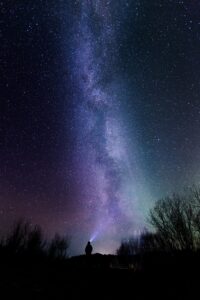

A: In one way it is but in another way it is not. It is true that the ripping of the veil opened the way for those who were forbidden to enter in before could now enter in, but the catch is that only those of the priesthood can enter in. Keep in mind the High Priest was the only one who entered the Most Holy Place once a year to make atonement for all of Israel, while those of the rest of the priesthood could only minister in the Holy Place (Leviticus 16).
The tabernacle had three entrances. There was the gate into the outer court, the door into the Holy Place and the veil into the Most Holy Place. The common man could enter the gate to present their offering to the priest to be sacrificed on the altar of burnt offering, but only those of the priesthood could enter through the door of service to keep the candlestick lit, replace the bread on the table of shewbread, and keep the incense burning on the altar of Incense. But they could never enter into the Most Holy Place.
The Most Holy Place was to be a place of communion, and only the High Priest could enter into it once a year, but he did so after offering sacrifice on his behalf and releasing the incense into the Most Holy Place. This all pointed to the work of redemption that satisfied the Law of God with the sacrifice that would take away sins. The cross represents the only gate through which we can enter (Jesus’ sacrifice) in order to be saved. Jesus is the door through which the sheep enter into service (discipleship), and the body of Jesus on the cross represents the veil that has been torn so that man can now have access into the place of communion and fellowship; but it is up to each individual to enter into that place, for our High Priest has gone before each of us by way of the cross and made the necessary sacrifice for us so we can boldly enter into it (Exodus 25:22; Matthew 7:13-14; John 10:9; 14:6; Hebrews 9:24-28; 10:19-24).
However, this is where the catch comes in, the person who enters in must be part of the priesthood. Upon receiving Jesus as our Lord and Savior, we become kings and priests (Revelation 1:6). 1 Peter 1:9 states this about those who are part of the church, the body of Christ, “But ye are a chosen generation, a royal priesthood, an holy nation a peculiar people; that ye should shew forth the praises of hm who hath called you out of darkness into his marvellous light.”
When the veil was torn, it meant now all of those of the new priesthood, made up of both Jew and Gentile, could enter into the Most Holy Place of communion and worship. It is important to note that after Jesus’ death on the cross and when the veil was torn, other saints of old rose from their graves (Matthew 27:50-53). Not only was the way into the Most Holy of Holies opened, but now the souls kept in Abraham’s bosom as pointed out in Luke 16:22-25 would be brought into the joy of their redemption, and like the statement Paul made in relation to when his body would be put off in 2 Corinthians 5:8, “We are confident, I say, and willing rather to be absent from the body, and to be present with the Lord.”
The Goal of Gentle Shepherd Ministries is to preach the gospel of the Lord Jesus Christ and to make disciples in compliance with the Great Commission (Matt. 28:19).